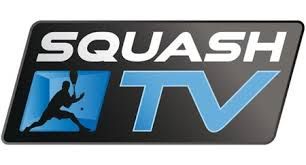Squash Anyone? Platform Permutations for Live Sports
This week’s finals of the U.S. Open Squash championship tournament are available on at least five video platforms – including linear cable and on-demand streaming – at prices ranging from $14 to free. The multiplatform, variable-fee approach may offer a glimpse of future program distribution tactics, especially for producers of special-interest, real-time content.
The two-week men’s and women’s squash tournaments, which culminate in finals from Philadelphia on Thursday and Friday of this week, can be seen via the One World Sportschannel, which is carried on Dish, Cablevision's Optimum TV and some Mediacom systems. ESPN3, the online-only streaming video channel for authenticated ESPN subscribers, is also carrying the tournament.
Squash TV, the official live and video-on-demand website of the Professional Squash Association, streams the games to its own customers and to affiliates. Viewers can subscribe to Squash TV for fees ranging from $13.99 per month to $120 for an annual pass; its online affiliates get a revenue share for members they bring to the video stream.

YouTube has carried most of the preliminary U.S. Open squash matches, some of them live. Archived games are also available free on YouTube.
This week’s semifinal and final matches are being beamed worldwide via satellite, to broadcast and cable channels (often ad-supported) which carry the games, usually with their own commentators voicing coverage in whatever language is needed.
Perform Group, the London-based sports production company, is handling video production, capturing, editing and transmitting all the video feeds to the multiple distributors, under the auspices of the Professional Squash Association. PSA has distribution partners worldwide (such as Fox Sports Australia) that carry the matches on major TV networks in regions where the sport is more popular than it is in the U.S.
While that’s a lot of distribution diversification for an event that is being watched by a relatively select audience – even the sponsoring groups acknowledge that squash is an “elite” sport – the multiplatform approach underscores the importance of audience targeting.
Kevin Klipstein, CEO of U.S. Squash, the sport’s governing body in the U.S. and the organizer of this month’s tournament, observes that the audience may be limited but the demographics are top notch. He estimates that there are about 1.2 million squash players in the U.S. Their average annual income is $350,000 and average net worth is $1.5 million – which is the sales pitch that program suppliers have been using as they seek sponsorships for the elite sport and its major events, such as this week’s Open.
Hence, no surprise: the primary sponsors are financial services firms.
The Open championship matches are being played at Drexel University in Philadelphia. “Center Court” is a specially designed Plexiglas cage that enables dramatic camera angles, including aerial and floor shots. Preliminary matches were played on standard courts at Drexel with a single fixed camera and, for the most part, feeing video to YouTube without any verbal commentary.
One World Sports, the cable channel that aggregates global sports events, lists its squash lineup under “other racquet t sports.” OWS has been seeking U.S. cable carriage deals and has faced the challenge of cable’s programming hierarchy. Some MSOs want to put the channel on an “international” tier because of its emphasis on global sports events. OWS prefers to be in a sports tier.
For Cablevision’s Optimum TV, OWS is a standalone service, priced at $2.95 per month – which this month includes the two weeks of U.S. Open Squash tournament games.
Although PSA, U.S. Open Squash, One World Sports and the other distributors are tracking the number of viewers and online sessions (using metric capabilities of Internet video and addressable set-top boxes), none of the groups has revealed usage data. The groups are expected to digest the results as they plan future digital distribution tactics.
Their decisions are likely to offer lessons on how to package and promote specialty content – especially esoteric programming for high-value audiences.
With all those video options, the squash promoters hope they have a smash on their hands.
Multichannel Newsletter
The smarter way to stay on top of the multichannel video marketplace. Sign up below.
Contributor Gary Arlen is known for his insights into the convergence of media, telecom, content and technology. Gary was founder/editor/publisher of Interactivity Report, TeleServices Report and other influential newsletters; he was the longtime “curmudgeon” columnist for Multichannel News as well as a regular contributor to AdMap, Washington Technology and Telecommunications Reports. He writes regularly about trends and media/marketing for the Consumer Technology Association's i3 magazine plus several blogs. Gary has taught media-focused courses on the adjunct faculties at George Mason University and American University and has guest-lectured at MIT, Harvard, UCLA, University of Southern California and Northwestern University and at countless media, marketing and technology industry events. As President of Arlen Communications LLC, he has provided analyses about the development of applications and services for entertainment, marketing and e-commerce.

